Healing through art: Bringing color and comfort to hospitals in developing countries
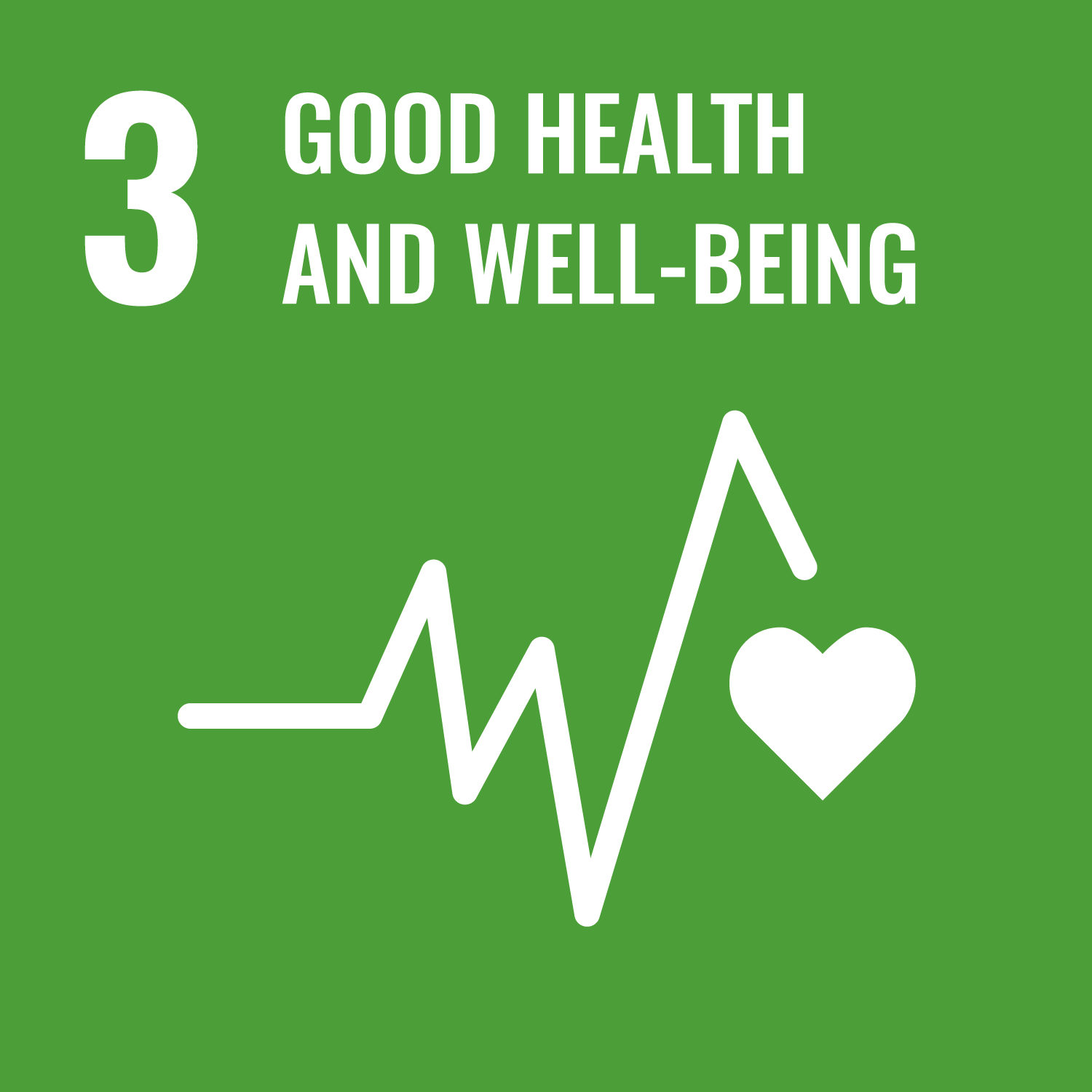
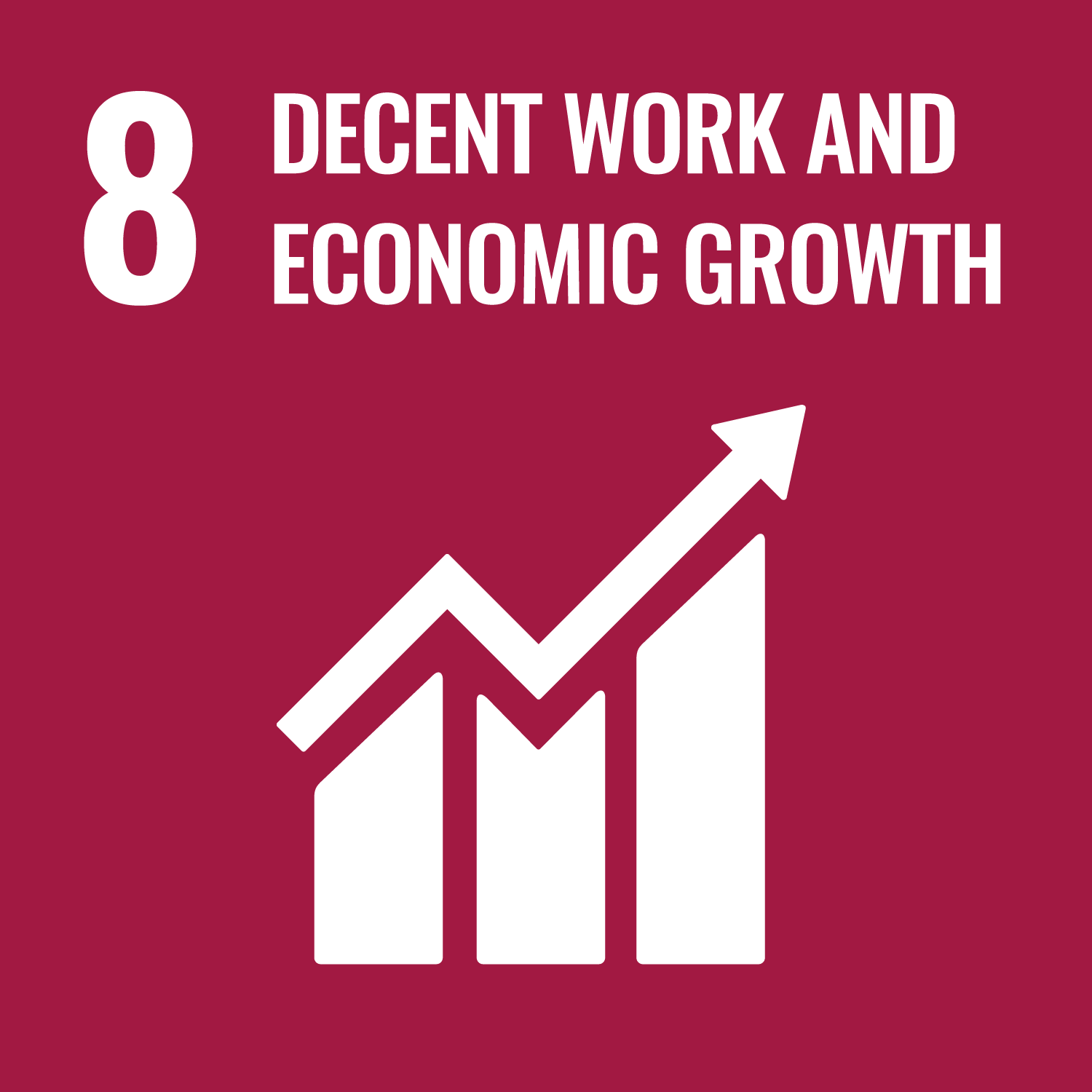
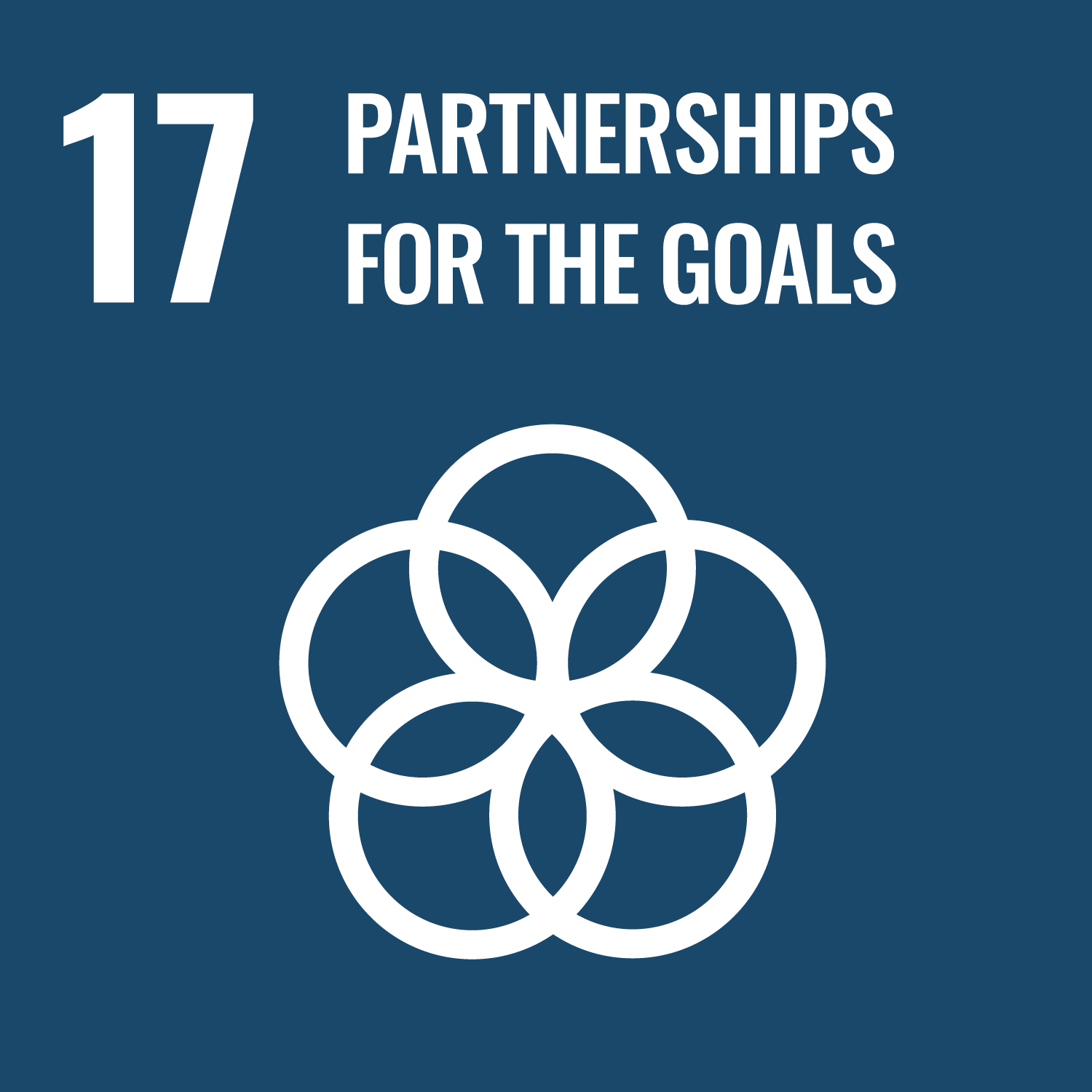
2025.10.22
Artist Kouno Lulu is dedicated to "hospital art," painting murals in hospitals to transform sterile environments. Her vibrant artwork helps lessen patients' anxiety and pain, while creating a space that empowers healthcare professionals to work with pride. In collaboration with Lulu, JICA is bringing comfort and tranquility to hospitals in developing countries.
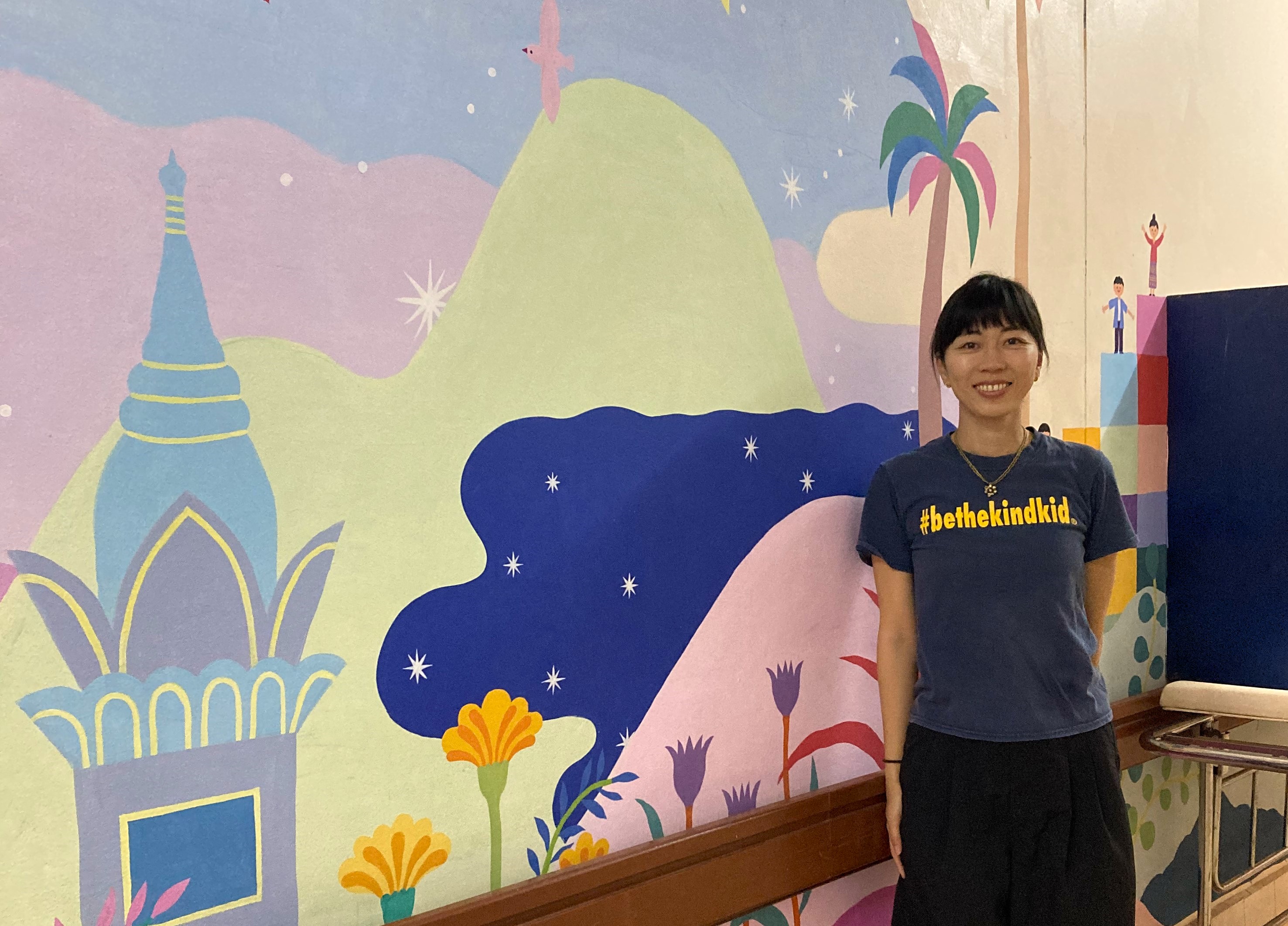
Kouno Lulu stands in front of the completed hallway mural at Champasak District Hospital in Laos.
With pastel tones and flowing lines, Kouno Lulu’s murals burst with plants, animals, and scenes of the natural world. They carry a warmth and vitality that light up the space—and everyone in it.
Lulu began creating murals in 2015, inspired by a round-the-world trip that brought her to Mexico. She asked the owner of a guesthouse, “Would you let me stay for free if I paint on your walls?”—and the owner happily agreed. After painting vegetables from the local market on the kitchen walls, everyone loved it. The experience sparked her love for painting, and upon returning to Japan, she began pursuing it in earnest.
Continuing her travels through Asia and Africa, Lulu painted murals in hospitals and orphanages as part of charity work. It was during these journeys that she witnessed the harsh realities faced by children suffering from illness and poverty, often without access to adequate education.
When Lulu organized a crowdfunding campaign to paint murals across five Asian countries, more than 400 supporters contributed in just over a month, exceeding the fundraising goal. In Laos, the fifth country on her tour, she painted a mural in a pediatric hospital, and delighted doctors shared photos of the artwork on social media.
Those posts caught the attention of Nagatani Shiori from JICA's Southeast Asia and Pacific Department. Nagatani reached out to Lulu and asked, "Would you like to go to Laos again?"
For many years, JICA has been assisting in the development of medical facilities in developing countries through Official Development Assistance (ODA) projects. However, due to budget constraints, these ODA projects often result in facilities with sterile and uninspired designs. While planning a new hospital in Laos, JICA recognized challenges such as "people hesitating to seek treatment even when hospitals are built" and "exhausted medical staff."
Nagatani reflected, "We needed a human-centered approach that resonates with people's hearts."
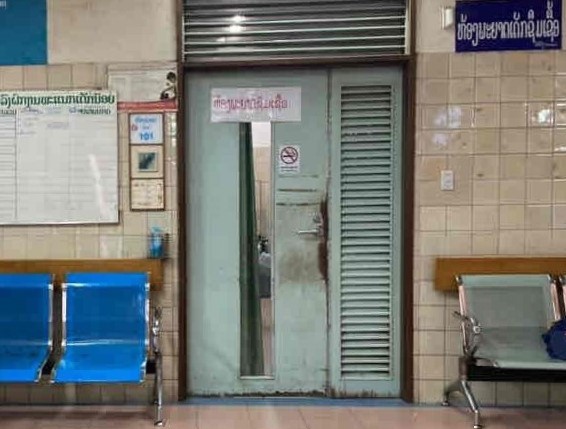
The interior of Setthathirath Hospital in Laos, where signs of aging were evident.
This led to a focus on hospital art, which has gained attention in Western countries. A report published by the World Health Organization (WHO) in 2019 also highlighted the positive impact of art on health. Art themed around nature in waiting rooms and patient rooms not only alleviates patients' anxiety but also stabilizes blood pressure and breathing, reduces pain, and boosts the morale of healthcare workers.
However, similar research in developing countries is limited, making this an unprecedented challenge for JICA. As a first step, it was decided to create murals in existing hospitals in Laos. Nagatani, who had experience in Laos as a midwife with the Japan Overseas Cooperation Volunteers, conveyed to Lulu, "Financial and material support is important, but so is caring for and enriching people's hearts. We want to create hospitals that are trusted and loved by the local community." Lulu deeply resonated with this appeal.
Thus, JICA's hospital mural project, the "Wellness Art Initiative," was launched.
The project targets the pediatric ward at Setthathirath Hospital in Vientiane Capital, and the maternal and child health wing at Champasak District Hospital in Champasak province. Both facilities were constructed with JICA's support, and Setthathirath Hospital, built in 1999, is particularly showing its age. The mural creation took place over approximately two weeks at each site, starting in early January 2025.
Upon her first visit to the hospitals, Lulu was taken aback by the conditions inside. There were not enough beds, and women who had just given birth lay on stretchers in the hallways. Mothers were changing their babies' diapers on the concrete floors, where patients' families were also spending the night.
"There is no hospital food, so when a child is hospitalized, the mother stays with them. This means there's no one to do housework, so the whole family brings pots and rice cookers and stays there. It must be truly exhausting," Lulu observed.
Wanting to brighten the hospital with her paintings, Lulu pondered what to depict. What do people love? She began engaging with various people within the hospital to find out.
Creating murals overseas requires a deep understanding of the local culture, beliefs, and values, with careful attention to shapes and colors. Additionally, considerations must be made for creating a welcoming atmosphere suitable for a hospital, as well as accommodating the flow of patients. For the protective coating on the paint, a mosquito-repellent ingredient was used to help prevent dengue fever, which is transmitted by mosquitoes.
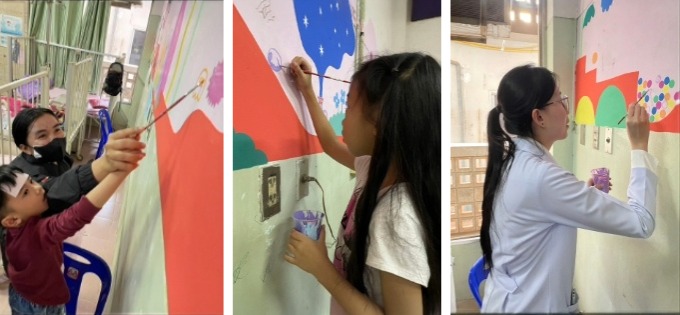
Left photo: A young patient paints alongside his mother.
Center photo: Right photo: An 8-year-old girl who returned to paint multiple times.
Right photo: Healthcare workers also painted during breaks at Setthathirath Hospital.
A key focus of the project was "co-creation." Lulu encouraged child patients, their families, nurses, doctors, and locals who showed interest by handing them paintbrushes and inviting them to join in. Even children who had been crying after blood transfusions quickly smiled when given a brush. JICA staff, including Nagatani, also participated in the painting.
The completed murals featured Lulu's signature motifs of nature and animals, along with local UNESCO World Heritage sites, patterns from traditional clothing, and even a painting of kittens born in the hospital, all to everyone's delight. The once sterile and cold hospital environment was transformed, with many commenting, "It's beautiful" and "It doesn't feel like a hospital anymore." A man who had just undergone surgery looked at the artwork with a cheerful expression. There was even a doctor who proudly said, "I painted this part."
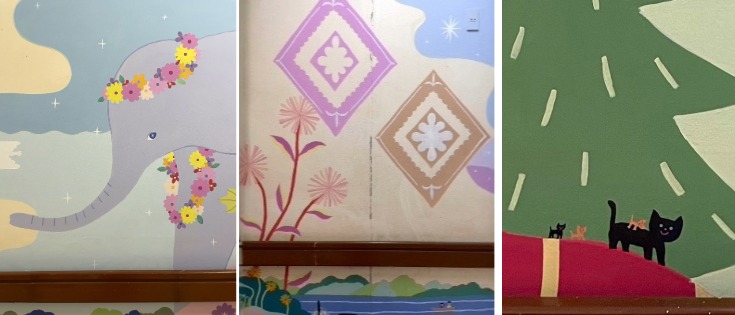
Left photo: Elephants, familiar to the people of Laos.
Center photo: Patterns from traditional women's attire.
Right photo: A mother cat and her kittens, born in the hospital during the mural creation at Champasak District Hospital.
What impact did Lulu’s mural have on patients, their families, and medical staff? JICA carried out on-site interviews with approximately 80 people.
Here’s what parents of children receiving care at Setthathirath Hospital had to say:
"Now, no matter where I look in the room, I don’t feel scared anymore. The last time I was here, (before the mural was painted), just looking at the (bare) walls gave me goosebumps —I had to turn my face away."
“(The mural) makes injections feel less scary and changes the mood of the children. Counting the animals lifts their spirits.”

Left photo: The area in front of the examination room as it appeared before the murals.
Right photo: The area in front of the examination room after the murals were completed at Champasak District Hospital.
At Champasak District Hospital, expectant mothers, who often felt anxious about their pregnancies and childbirth, reported feeling as if they were in a rice field.
Lulu wondered, "Why a rice field when I didn't paint one?" Nagatani explained, "Many people living in rural Laos lead peaceful lives farming in nature. Spending time in a hut by the rice fields is a symbol of everyday tranquility for them. Feeling like they're in a rice field likely means experiencing ultimate peace." Lulu considered this the highest compliment.
Additionally, many healthcare workers reported increased job satisfaction and motivation. Some doctors and nurses previously expressed stress over not being able to build trust with children who disliked examinations. However, since the completion of the murals, pediatric patients have become less fearful of procedures like injections, making it easier to gather health-related information.
"When a child starts crying, we say, 'Don't cry. If you cry, the birds in the mural will cry too,' and they stop," said one member of the medical staff.
"Patients are more satisfied and no longer shout at the healthcare workers. This makes us feel more at ease, which in turn makes our work smoother," said another.

Left photo: The pediatric ward as it appeared before the murals.
Right photo: The pediatric ward after the murals were completed at Setthathirath Hospital.
Lulu said, "Through creating murals, I've been exposed to various countries and religions, allowing me to see the world through a more peaceful lens."
"People in hospitals face illness and death every day. If I can convey even a small message of 'I'm cheering for you' through my murals, that would be enough. I also hope that, like my own past experiences, the small, spontaneous challenges faced by the children who paint with me can inspire them to take new steps."
Building on the success in Laos, JICA plans to collaborate with Lulu to create murals in Tanzania and Angola during the 2025 fiscal year. Bringing peace and hope to people's hearts through art and fostering emotional richness -- this new initiative holds great potential.
A commemorative photo taken after the murals were completed at Setthathirath Hospital.
scroll